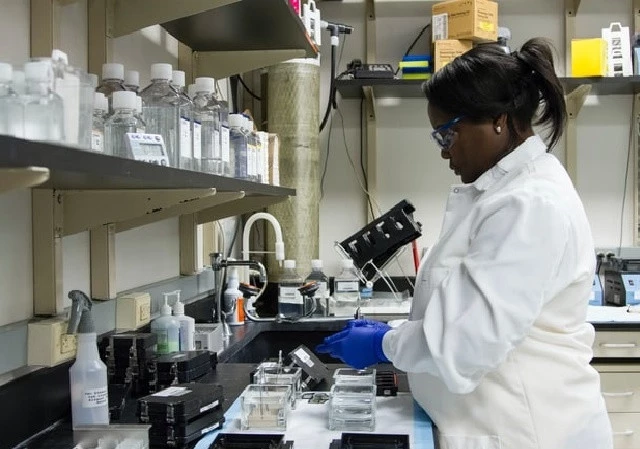Driving Biopharma Innovation and Operational Excellence in 2025
Driving Biopharma Innovation and Operational Excellence in 2025: The shift Toward Unified Systems and Streamlined Workflows
Add bookmark
As the New Year celebrations have receeded from memory and January is well underway, Pharma IQ wanted to take a moment to highlight the trends and transformations that will shape the biopharma landscape in 2025. To provide a forward-looking perspective, we’re delighted to feature a guest article by Rik van Mol from Veeva Systems. From innovations in regulatory submissions to fostering diversity in clinical trials, Rik outlines eight key predictions that highlight how the industry is balancing operational excellence with breakthrough innovation. Here’s what’s ahead for biopharma in 2025.
Driving biopharma innovation and operational excellence in 2025
By Rik van Mol, Veeva Systems
As we look ahead to 2025, biopharma companies are embracing transformative approaches to optimize drug development, improve patient outcomes, and accelerate time-to-market. Innovations in data management, regulatory submissions, clinical trials, and quality assurance are reshaping the industry. While these advancements bring opportunities, they also require thoughtful execution to address inherent challenges.
Below are eight predictions for 2025 that outline how biopharma companies will continue to drive innovation and operational excellence.
1. Process excellence to accelerate content and data flow across R&D
Today, the integration of adverse event data into safety cases varies greatly, from fully automated workflows to time-intensive manual processes. These inconsistencies slow drug development, placing a burden on patients. In 2025, biopharma companies will prioritize process excellence to streamline content and data flows across R&D.
As sponsors move away from disconnected, best-of-breed solutions, they will standardize and simplify processes. Investments in R&D process standards will lead some companies to adopt workflow automation, while others may create dedicated process excellence teams to enhance efficiencies across clinical, regulatory, safety, and quality functions.
2. Underrepresented trial populations will get more choice
Patient enrolment and retention remain persistent challenges. Trial complexity and participant fatigue often lead to high dropout rates. In 2025, sponsors offering diverse options for onboarding and trial visits will expand participant pools, particularly among underserved populations.
The U.S. Food and Drug Administration’s new guidance on Diversity Action Plans requires sponsors to enrol underrepresented groups and provide demographic breakdowns in submissions. This shift will drive changes in data processing and analysis to ensure clean, sufficient data for each subgroup. Unified data systems will enable sponsors to accommodate complex trial requirements while enhancing patient experiences.
3. Sponsors will step forward to help solve site capacity issues
Clinical research sites are under immense strain. Staff turnover and increasingly complex protocols are reducing their ability to take on more trials. In 2025, sponsors will prioritize site engagement strategies focused on standardized technology and streamlined workflows.
With over half of sites identifying multiple sponsor systems as a top challenge, the push for consistent tools across trials will gain momentum. Reducing administrative burdens will free site staff to focus on patients, helping rebuild capacity and ensuring trials proceed without delays.
4. Simultaneous submissions will shave years off approvals
Sequential submissions, once standard, are now seen as an outdated obstacle to timely patient access. Although digitalization has streamlined some aspects of regulatory submissions, core markets often receive approvals first, delaying access in smaller markets.
New methods, such as active dossiers, will allow teams to reuse prior submissions more effectively. As more companies and health authorities embrace simultaneous submissions, timelines that once exceeded five years could be reduced significantly. These advancements will improve access for underserved patient populations while alleviating regulatory workloads.
5. Common data will help health authorities speed submissions
Health authority approvals remain resource intensive. The lack of coordinated review processes and language disparities contribute to inefficiencies. In the coming years, regulatory reliance pathways and industry-wide initiatives will drive collaboration among health authorities to streamline reviews.
Shared submission data and question-and-answer repositories will improve consistency, reduce duplication, and accelerate approvals. Sponsors and health authorities will need to balance these efficiencies with the integrity of local decision-making processes.
6. QA and QC will come together to eliminate bottlenecks
Quality assurance (QA) and quality control (QC) are integral to drug development, yet their processes often remain siloed. In 2025, leading companies will invest in unified digital quality systems, connecting QA, QC, and external partners through shared technology.
This integration will streamline batch releases, reduce errors, and proactively identify risks. Early-stage companies will also benefit from automation, allowing them to scale operations cost-effectively while laying the groundwork for AI-driven quality advancements.
7. CRO data transparency will boost trial success
Sponsors are increasingly prioritizing contract research organizations (CROs) that provide continuous data transparency. In 2025, the industry will see a shift toward end-to-end data ownership, fostering more fluid collaboration between sponsors and CROs.
Transparent, real-time data sharing will improve decision-making in protocol design, site onboarding, rare disease participant identification, and endpoint adjustments. Emerging biotechs will benefit from enhanced oversight, enabling more agile operations. Greater data transparency will build trust across the clinical development ecosystem, improving trial outcomes and accelerating access to new medicines.
8. Comprehensive and reliable safety data will fuel advanced automation
Safety professionals continue to grapple with an age-old question: how to handle growing data volumes with fewer resources while maintaining high quality. AI holds promise to do more with less, but inconsistent and disconnected data creates risk.
To effectively support AI, safety teams will strengthen their data foundations with standardized, end-to-end pharmacovigilance processes. Cross-functional workflows will eliminate manual data transfers and provide clear data traceability back to the source. By simplifying and standardizing their systems landscape, companies will lay the groundwork for accelerating automation and AI innovation.
This end-to-end data flow also opens the door for improved collaboration across organizations. For example, processes like timely reporting of SAEs from clinical EDC systems to safety can be done automatically with more complete data.
Trends signal a pivotal moment for biopharmas and biotechs in 2025
The industry is poised to balance innovation with operational excellence, addressing persistent challenges such as site capacity, regulatory complexities, and patient diversity. By embracing unified systems, streamlining workflows, and fostering greater collaboration with regulators, sites, and CROs, companies can accelerate timelines, enhance patient outcomes, and build a more resilient framework for the future of drug development. These shifts represent not just incremental improvements but a transformation in how medicines are developed, tested, and delivered to patients globally.


























